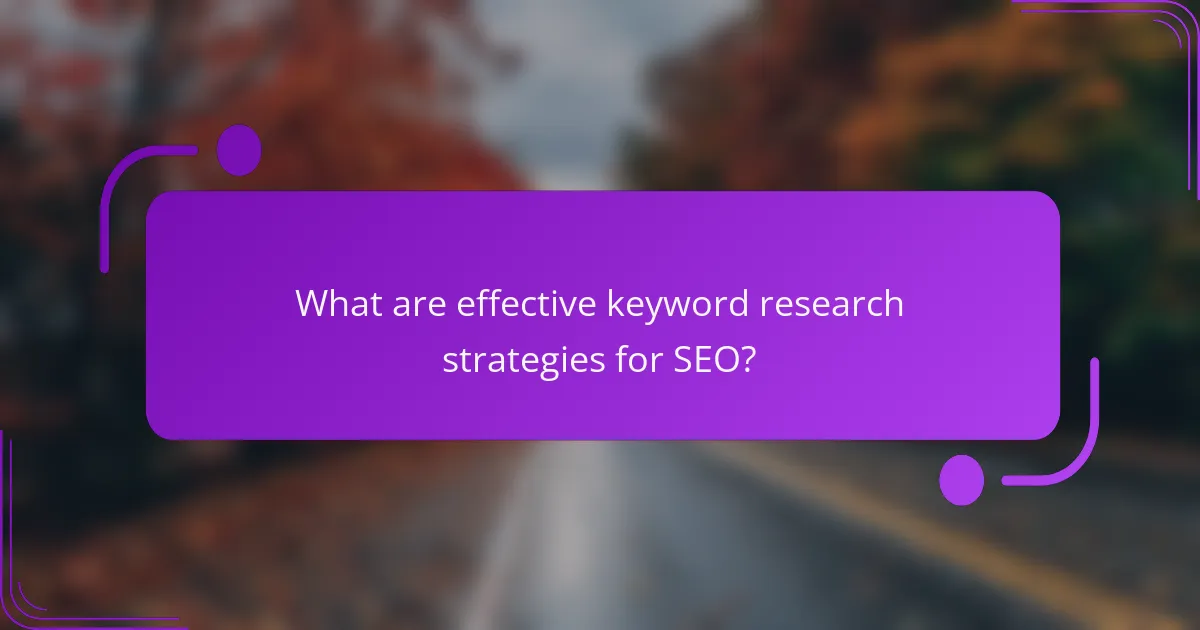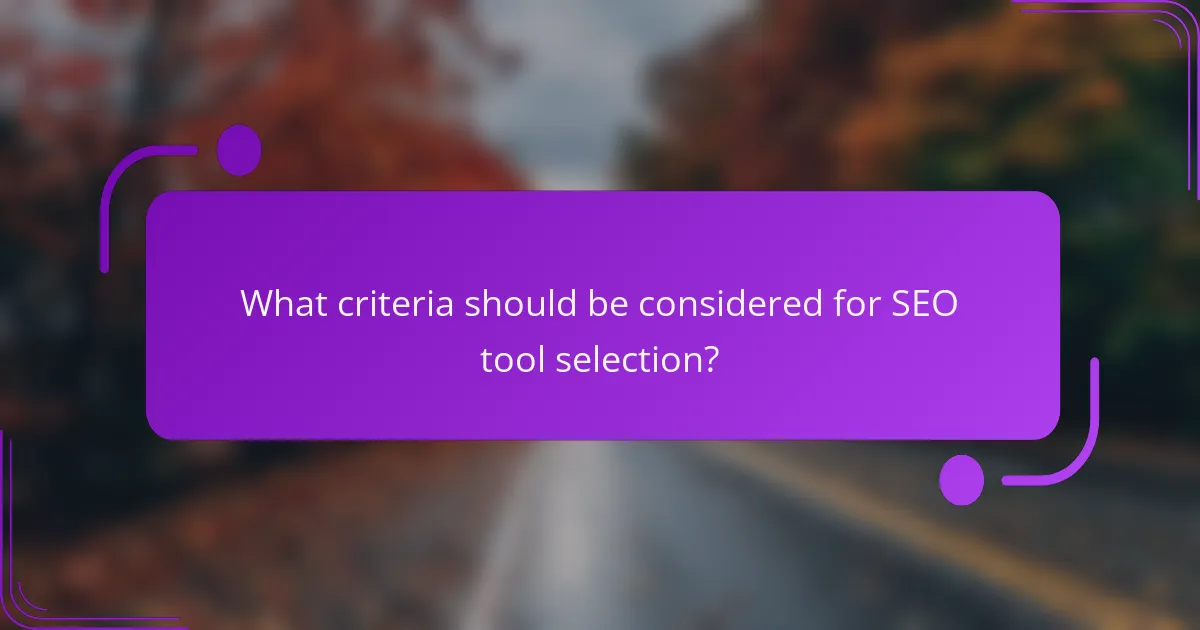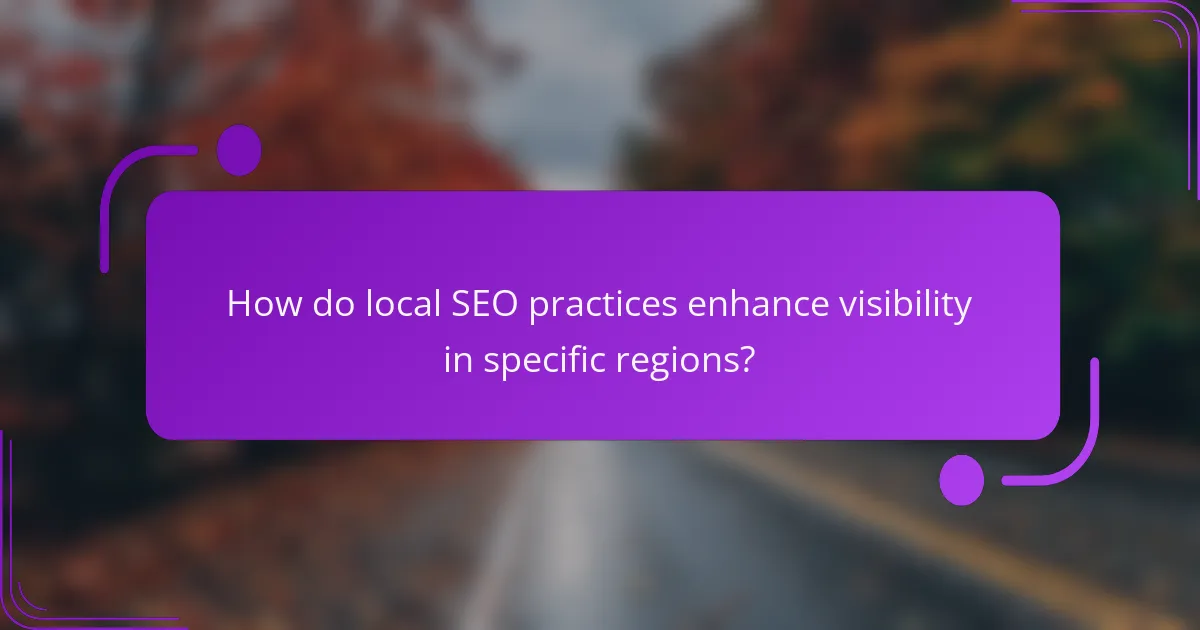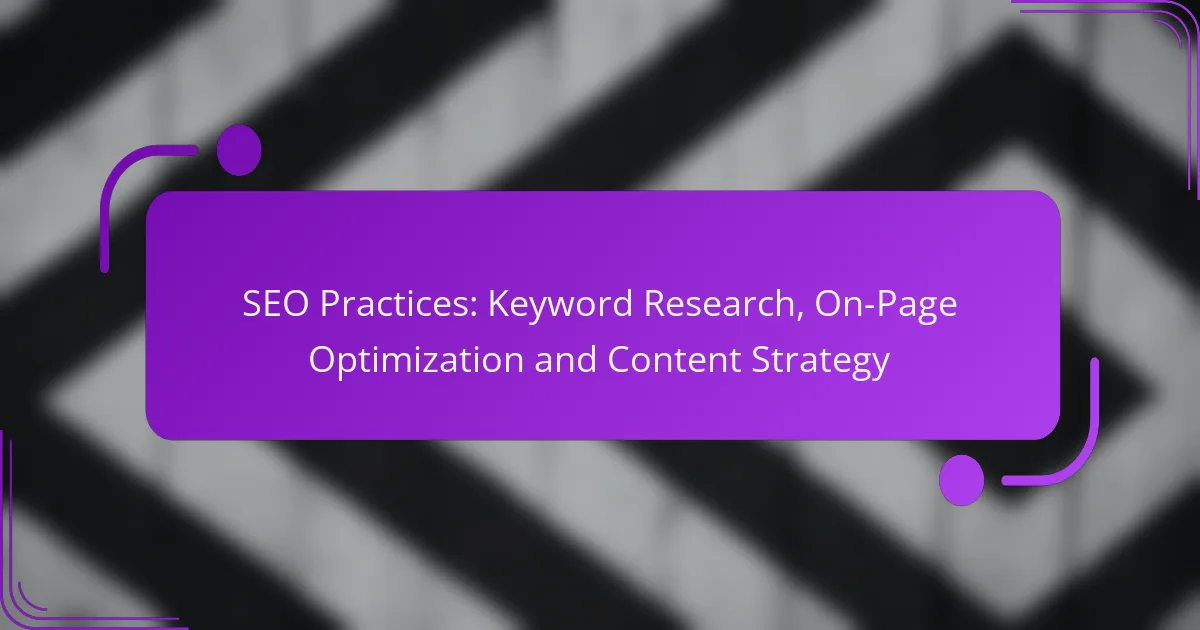In the realm of SEO, mastering keyword research, on-page optimization, and content strategy is essential for driving organic traffic and improving site visibility. By identifying relevant keywords, optimizing web pages for user experience, and creating engaging content, businesses can significantly enhance their search engine rankings and attract a larger audience.

What are effective keyword research strategies for SEO?
Effective keyword research strategies for SEO involve identifying relevant terms that potential customers use in search engines. By focusing on the right keywords, you can optimize your content to attract more organic traffic and improve your site’s visibility.
Using Google Keyword Planner
Google Keyword Planner is a free tool that helps you discover keywords related to your business. You can enter a phrase or website to generate keyword ideas, along with data on search volume and competition levels.
To use it effectively, start by brainstorming a list of seed keywords. Then, analyze the suggested keywords based on their average monthly searches and competition. Aim for a mix of high-volume and low-competition keywords to maximize your reach.
Leveraging SEMrush for competitive analysis
SEMrush is a powerful tool for conducting competitive analysis in keyword research. It allows you to see which keywords your competitors rank for and how much traffic those keywords generate.
To leverage SEMrush, enter your competitor’s domain and navigate to the “Organic Research” section. This will provide insights into their top-performing keywords, enabling you to identify gaps in your own strategy and discover new opportunities.
Exploring long-tail keywords with Ahrefs
Ahrefs specializes in finding long-tail keywords, which are typically less competitive and more specific phrases that users search for. These keywords can drive highly targeted traffic to your site.
Use the “Keywords Explorer” feature in Ahrefs to input broad keywords and get a list of related long-tail suggestions. Focus on keywords with decent search volume but lower difficulty scores to enhance your chances of ranking well.
Identifying search intent with AnswerThePublic
AnswerThePublic is a unique tool that visualizes search queries based on user intent. It helps you understand what questions people are asking related to your keywords, which can guide your content creation.
By entering a keyword, you can see various questions and prepositions associated with it. This insight allows you to tailor your content to directly address user queries, improving engagement and relevance.
Utilizing Ubersuggest for content ideas
Ubersuggest is a versatile tool that not only provides keyword suggestions but also offers content ideas based on those keywords. It helps you identify popular topics that resonate with your target audience.
To use Ubersuggest, enter a keyword and explore the “Content Ideas” section. This will show you the most shared articles related to that keyword, giving you inspiration for your own content while ensuring it meets audience interests.

How can on-page optimization improve SEO performance?
On-page optimization enhances SEO performance by making web pages more relevant and user-friendly, which can lead to higher search engine rankings. Key elements include optimizing content, improving site structure, and ensuring fast load times.
Optimizing title tags and meta descriptions
Title tags and meta descriptions are critical for SEO as they directly impact click-through rates from search results. A well-crafted title tag should be concise, include primary keywords, and ideally be under 60 characters, while meta descriptions should summarize the page content in about 150-160 characters.
To optimize these elements, ensure they are unique for each page and compelling enough to encourage users to click. Avoid keyword stuffing; instead, focus on clarity and relevance to the content.
Using header tags for content structure
Header tags (H1, H2, H3, etc.) help organize content and improve readability, which is beneficial for both users and search engines. The H1 tag should contain the main keyword and clearly define the page’s topic, while H2 and H3 tags can be used for subheadings and to break down sections.
Utilizing a logical hierarchy with header tags not only enhances user experience but also allows search engines to better understand the content structure, potentially improving rankings.
Implementing schema markup for rich snippets
Schema markup is a form of microdata that helps search engines understand the context of your content, potentially leading to rich snippets in search results. These snippets can include ratings, prices, and other information that make your listing more attractive.
To implement schema markup, use Google’s Structured Data Markup Helper to generate the code, and ensure it aligns with the content type. Regularly test your markup with Google’s Rich Results Test to confirm proper implementation.
Improving page load speed with Google PageSpeed Insights
Page load speed is a crucial factor for SEO, as faster pages provide a better user experience and can lead to higher rankings. Google PageSpeed Insights is a tool that analyzes your page’s performance and offers suggestions for improvement.
Common recommendations include optimizing images, leveraging browser caching, and minimizing JavaScript. Aim for a load time of under 3 seconds to retain visitors and reduce bounce rates.
Enhancing mobile-friendliness with responsive design
Mobile-friendliness is essential for SEO, especially as more users access websites via smartphones. Responsive design ensures that your site adapts to different screen sizes, providing an optimal viewing experience.
To enhance mobile-friendliness, use flexible layouts, scalable images, and CSS media queries. Regularly test your site on various devices and screen sizes to ensure consistent performance and usability across platforms.

What content strategies drive organic traffic?
Effective content strategies that drive organic traffic focus on creating valuable, engaging, and consistent material that resonates with the target audience. By leveraging various formats and promoting content effectively, businesses can enhance their visibility and attract more visitors.
Creating high-quality, informative blog posts
High-quality blog posts are essential for attracting organic traffic. These posts should provide valuable insights, answer common questions, and address the needs of your audience. Aim for a length of 1,000 to 2,500 words, as longer content often ranks better in search engines.
Incorporate relevant keywords naturally throughout the text, and use headings and subheadings to improve readability. Regularly updating older posts can also boost their performance and relevance.
Utilizing video content for engagement
Video content significantly enhances user engagement and can improve organic traffic. Platforms like YouTube or social media channels are ideal for sharing videos that explain concepts, showcase products, or provide tutorials. Aim for videos that are concise, ideally between 2 to 5 minutes long.
Include relevant keywords in video titles and descriptions to optimize for search engines. Additionally, embedding videos in blog posts can increase the time users spend on your site, positively impacting SEO.
Incorporating user-generated content for authenticity
User-generated content (UGC) adds authenticity and builds trust with your audience. Encourage customers to share their experiences through reviews, testimonials, or social media posts. This not only enriches your content but also fosters community engagement.
Highlight UGC on your website and social channels to create a sense of belonging among users. This strategy can lead to increased shares and organic reach, as people are more likely to engage with content that features real customer experiences.
Building a content calendar for consistency
A content calendar helps maintain consistency in publishing and ensures a steady flow of fresh content. Plan your topics, formats, and publication dates in advance to stay organized and focused on your goals.
Consider seasonal trends and audience interests when scheduling content. Regular posting, whether weekly or bi-weekly, keeps your audience engaged and improves your site’s authority in search engines.
Promoting content through social media channels
Promoting content on social media channels is crucial for driving traffic. Share your blog posts, videos, and user-generated content across platforms like Facebook, Instagram, and Twitter to reach a wider audience.
Utilize targeted ads and engage with followers through comments and shares to enhance visibility. Analyze engagement metrics to refine your strategy and focus on the platforms that yield the best results for your content.

What criteria should be considered for SEO tool selection?
When selecting an SEO tool, consider features, usability, pricing models, and integration capabilities. These factors will help ensure the tool meets your specific needs and provides a good return on investment.
Assessing features and usability
Evaluate the core features of the SEO tool, such as keyword research, site audits, and backlink analysis. A user-friendly interface is crucial, as it allows for efficient navigation and quicker access to essential data.
Look for tools that offer customizable dashboards and reporting options, enabling you to tailor the insights to your specific goals. Testing a tool through free trials can help assess usability before committing financially.
Evaluating pricing models and ROI
Understand the pricing structure of the SEO tool, which can range from monthly subscriptions to one-time fees. Compare the costs against the features offered to determine if the investment aligns with your budget and expected outcomes.
Calculate potential ROI by considering how the tool can improve your search rankings and traffic. A tool that increases organic traffic by even a modest percentage can justify its cost over time.
Considering integration capabilities with existing tools
Check if the SEO tool can seamlessly integrate with your current marketing stack, such as analytics platforms or content management systems. Effective integration can streamline workflows and enhance data accuracy.
Prioritize tools that support API access or have pre-built integrations with popular software. This can save time and reduce the complexity of managing multiple platforms, ultimately improving your overall SEO strategy.

How do local SEO practices enhance visibility in specific regions?
Local SEO practices significantly boost visibility by optimizing online presence for specific geographic areas. By targeting local keywords and utilizing location-based strategies, businesses can attract more relevant traffic and connect with potential customers in their vicinity.
Understanding Local Keywords
Local keywords are search terms that include geographic identifiers, such as city names or neighborhoods. For instance, a bakery in Denver might target keywords like “best bakery in Denver” or “Denver artisan bread.” Identifying and integrating these keywords into your content helps search engines understand your business’s location and relevance to local searches.
To find effective local keywords, use tools like Google Keyword Planner or SEMrush, focusing on terms with moderate search volume and low competition. Aim for a mix of broad and specific phrases to capture a wider audience.
Optimizing Google My Business
Google My Business (GMB) is a crucial tool for local SEO, allowing businesses to manage their online presence on Google. By creating and optimizing a GMB profile, you can provide essential information such as your address, phone number, hours of operation, and services offered. This helps improve your visibility in local search results and Google Maps.
Regularly update your GMB profile with accurate information and engaging photos. Encourage satisfied customers to leave reviews, as positive feedback can enhance your credibility and attract more local clients.
Building Local Citations
Local citations are online mentions of your business’s name, address, and phone number (NAP) on various websites. Consistent citations across directories like Yelp, Yellow Pages, and local business associations help search engines verify your business’s legitimacy and improve local rankings.
Ensure that your NAP information is consistent across all platforms. Use tools like Moz Local or BrightLocal to check for discrepancies and manage your citations effectively.
Leveraging Local Content Marketing
Creating content that resonates with local audiences can significantly enhance your local SEO efforts. This could include blog posts about local events, partnerships with other local businesses, or community-focused initiatives. Such content not only engages your audience but also establishes your business as a local authority.
Consider incorporating local news, interviews with community figures, or guides to local attractions in your content strategy. This approach can attract backlinks from local websites, further boosting your search visibility.
